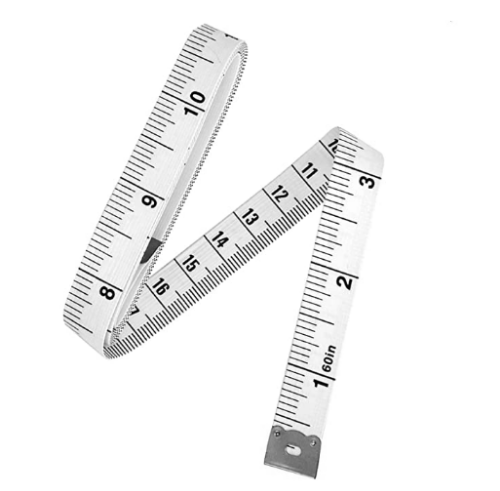A tape measure is a flexible ruler used to measure size or distance. There is an unreferenced mention that the Romans were the first people to use marked strips of leather to measure. Early tape measures were merely lengths of tape to measure accurately only the between the brass pieces attached at either end. Subsequently rivets were used to mark the increments. In the 20th century a tape measure was required as an essential item in a physiotherapist’s pockets.
Tape measures commonly used by physiotherapists are made from flexible cloth, or more recently plastic or fibreglass which are less likely to tear or stretch. Their flexibility make it easier to measure around the curves of the body. Tapes are generally 4-6 feet (1.22-1.83 metres), marked in increments of one inch and tenths, or centimetres and millimetres. Tape measures may be a simple rolled length or retractable into a casing that is easily pocketed.
Tape measures are cheap, easily used and essentially reliable. Examples of their use include, to measure;
- limb circumference as an indication of muscle bulk,
- waist circumference as a general guide to increased obesity-related health risks,
- change in thoracic circumference as an indication of lung expansion,
- leg length for comparative purposes or the fitting of walking aids,
- body height as a metric contributing to Body Mass Index calculation and a guide to development of children or decreased stature in older people;
- distance covered when moving a joint or a limb, and
- a length of floor for a timed walking distance test or leaping test.
Description provided by Catherine Sykes of Australia

